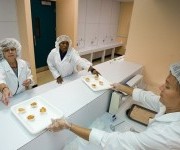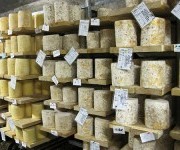It’s hard for taste tests performed in lab environments to produce results that work in real-world contexts.Photo: UGA College of AgricultureFood Studies features the voices of 11 volunteer student bloggers from a variety of different food- and agriculture-related programs at universities around the world. You can explore the full series here.
Start talking about sensory science, and food science in general, and most people will assume you are also talking about the industrial food system. Although it is a science shaped by the assumptions of the food industry, I don’t like to look at it that way. I love what I tend to call (with a bit of a self-deprecating smirk) “real food,” and I think handmade, artisan, and local foods are just as worthy of scientific inquiry as foods produced on a factory line. So how can we make sensory science examine this kind — my kind — of food?
Sensory science is a sub-discipline of food science that originated, like so much of that field, in the industrialization of the food system during and after World War II. The first inquiries into the sensory properties of food were motivated by a need to feed... Read more

